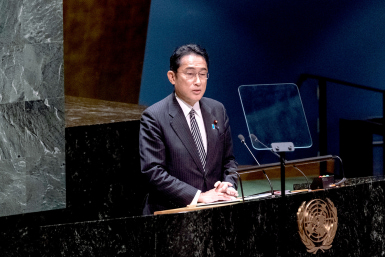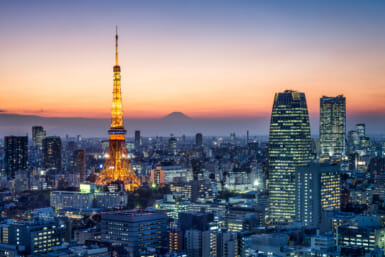by Brett Imura and Iona Macnab
New Year’s is the biggest Japanese holiday of the year. The whole country seems to shut down (including most ATMs, so don’t be caught unaware) for a few days starting January 1, but in recent times, some department stores have opened on January 2 in order to hold special sales.
Several things traditionally happen in Japan around the end of one year and the beginning of the next. First, in December, many com- panies hold bonenkai or “forget the year” parties. These are very similar to holiday events elsewhere in the world, but typically in December there are many more inebriated people taking the evening trains home!
The New Year’s holiday is usually a time for families to return en masse to ‘the grandparents’ house.’ December 31, called ohmisoka, sees everyone pitching in for ohsoji, cleaning the tatami mats, changing the paper in the shoji screens, and giving their home a thorough cleaning. Many families welcome a relaxing dinner of toshikoshi soba, a noodle dish which symbolizes crossing over from one year to the next, and then watching Kohaku Uta Gassen or The Red vs. White Singing Contest on television.
Around midnight, people across the country will be able to hear the joya no kane. The big bells at the buddhist temples toll 108 times to symbolize the 108 earthly desires that are considered the source of all human suffering. Each toll of the bell is believed to help people rid themselves of one of these desires. Whole families stand freezing in line for hours hoping to have a turn at tolling the bell.
Afterwards, they may head to a shinto shrine to view the first sunrise of the new year, which is supposed to bring good luck throughout the year. Thousands stream to shrines during the day for hatsumode, the first prayer of the year, a good time for kimono viewing at some of the more famous shrines such as Meiji Jingu. While there, taste a hot cup of sweet amazake, a fermented rice drink, to warm you up while waitåing in line to offer coins and prayers to the Gods.
Although each family has its own rituals, most start the first morning of the year off with otoso, sips of sake from a graduated set of lacquered cups used only on January 1. This is followed by the traditional New Year’s food called osechi ryori, a colorful variety of foods arranged in layered boxes and well preserved with salt or sugar in order to last throughout the holiday without refrigeration. In this way, the women of the family do not need to constantly prepare meals for each guest that arrives. Nowadays, it is also possible not to spend the days leading up to New Years endlessly preparing osechi, as many department stores offer ready-made boxes which can be
ordered in advance.
Nengajo, or New Year’s postcards, are another highlight of the festivities. The post office holds back all specially marked cards received by December 22 and delivers them to your door exactly on January 1. They often include family photos or a hand-painted watercolor accompanied by a New Year’s greeting in calligraphy. Many preprinted cards picture the zodiac animal for the coming year (2010 is the year of the tiger). But beware: it is customary for a family that has had a death during the past year to send out simple cards in December asking you to refrain from sending New Year’s cards. Children look forward to receiving otoshidama, money in small, colorful envelopes. The more relatives who gather, the more otoshidama is received, obviously a favorite part of the holiday for kids.
Hyakunin isshu, literally, one hundred people one poem, is a card game traditionally played during this time of year. A hundred poems from the Heian period are each split in half. The first half is read out while everyone searches for the second half from the remaining cards lain out on the floor. The first to grab the right card gets to keep it; the one with the most cards at the end wins. Kids learn the poems at school, often playing many practice competitions. With their fast reflexes and the poems fresh in their minds, they usually beat the pants off of the adults! Traditional sets of cards or modern versions such as Hello Kitty and Ultraman character sets can be found at department stores around this time of year, sometimes even in English.
Parenting Tip
Akemashite omedeto gozaimasu is the traditional New Year’s greeting and is appropriate to use with friends, family, business associates, and neighbors the first time you meet in the new year, even if it is a couple of weeks into January.
Brett Iimura ICCE, mother of two, is the director of the Childbirth Education Center (CEC), serving parents-to-be throughout Japan since 1997. Iona Macnab IBCLC is a lactation consultant in private practice in Tokyo and a mother of three. They have over thirty years of combined experience in Japan, and much experience raising bilingual, bicultural children!








